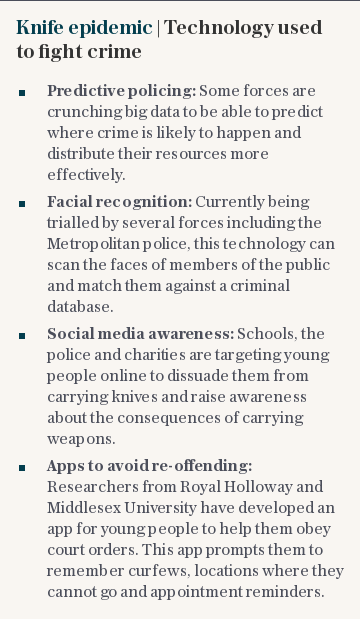'Profoundly worrying': Knife-wielding gang members now 'aiming to kill rather than frighten'

Knife attackers are now aiming for the heart "to kill rather than frighten" due to pent-up aggression built up over lockdown, a police chief has warned.
David Jamieson, West Midlands police and crime commissioner, said tensions had been inflamed by gangs threatening each other through social media during lockdown and these had now spilled out into gang battles over drug territory.
“There are some nasty things being done where people are attacking each other not with the intention of frightening but attacking them with intent to kill them which is different,” Mr Jamieson told The Telegraph.
“We haven’t had many actual homicides but some of the attacks have been very nasty indeed. Previously they would nick someone in the leg or nick someone on the arm or leg. Now they are going straight for the heart or jugular. That is profoundly worrying.
“The drugs market was disrupted during lockdown and the gangs are now back fighting for territory and the level of criminality is back to normal and a bit beyond.”
Professor Simon Harding, head of the national centre for gang research, said online threats by gangs against each other had increased during lockdown and they risked losing face if they were not followed through.
“Young people have been online on social media, and been too free with their opinions and have created tensions. So there is a reckoning, there's retaliation, there's revenge,” he said.
"It means that the severity of the injuries is far higher and far greater than it ever was before. And as a result of that, we've got multiple stabbings, we have got stabbings in parts of the body that are going to inflict life threatening damage.”

Before lockdown, the latest figures showed violent knife crime in England and Wales hit record levels with 46,000 knife offences in the year ending in March, up six per cent on last year, and 51 per cent higher than in 2011.
The picture was far more serious in London, as killings increased by almost a quarter from 115 to 142, with fatal stabbings going up by 28 per cent.
After a dip during lockdown, the number of violent attacks is back up to 6,684 in August, the highest for a year. Threats to kill are up by almost a quarter to 4399, a quadrupling since 2012.
Duncan Bew, a consultant trauma surgeon at King’s College, London, and member of the youth violence commission, agreed there was an increase in the brutality of attacks. “It is fair to say we have seen people coming in with multiple rather than single injuries,” he said.
“They are injuries in multiple locations not only in very dangerous places but sometimes very difficult to treat. It means an increase in life-threatening as well as life changing injuries. Some are mental health related but the vast majority of the most brutal injuries are related to serious and criminal enterprises.”
Mr Bew said children, sometimes as young as 11, were being exploited by gangs because of their often chaotic and unsafe lives at home, which has been compounded by the absence during lockdown of the potential protection afforded by school.
He argued for “primary prevention” where agencies collaborated to tackle the causes of the violence and backed the Government’s “public health” approach to tackling knife crime through its network of violence reduction units.
Lisa Smitherman, Catch22’s Director of Justice, said: “We were seeing increasingly violent language used in online exchanges, and had concerns that this would spill over into violence on the streets post-lockdown, as is now being seen,.
“Additionally young people have had fewer people supervising them while they weren’t in school and could not access the support they usually would. For too many, their only adult contact was with a parent.
"We must support and upskill frontline professionals who are working with children – that’s teachers, social workers, youth workers – on the risks online, how online harms escalate, and how they, as trusted adults, can engage in healthy, open dialogue with young people.”

